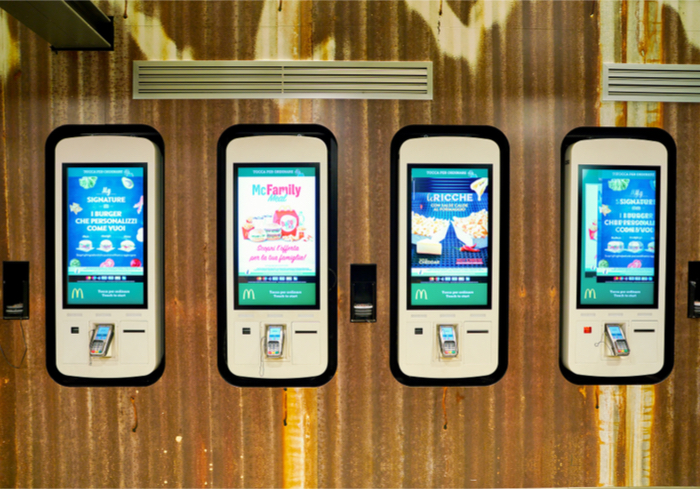QSR Ordering Kiosks Evolved From A 1980s Solution For Out-Of-Stock Shoes

As a college student in the 1970s, Murray Lappe heard that his fellow students wanted to promote their organizations through a new medium. During a retreat, the students thought of having a traditional bulletin board, but Lappe had an alternate take: Why not digitize the concept?
“We kicked the idea around, and it got some interest,” Lappe told kioskindustry.org. “After the session, the Dean suggested I apply for a grant to see if we could make it happen.”
With just $2,500 in seed money for the project, Lappe went to work on an interface and an algorithm to power what would arguably become one of the first self-service kiosks. The device would come to have a plasma touchscreen, which was important since many people didn’t know how to use a computer at the time.
“I wanted to make it as simple as possible for people who had never used a computer before,” Lappe added. “I didn’t want it to look or feel like a computer.”
The kiosk, which was dubbed the PLATO Hotline, appeared in the University of Illinois in Urbana-Champaign’s student center only a few weeks before Lappe graduated. And it was a resounding success.
Writer Keith Kelsen wrote in Unleashing the Power of Digital Signage: Content Strategies for the 5th Screen, “After it first debuted at the University of Illinois student union in April 1977, more than 30,000 students, teachers and visitors stood in line during its first six weeks to try their hand at a personal computer for the first time.”
Kiosk Meets Retail
A few years after the introduction of Lappe’s kiosk, the Florsheim Shoe Company decided to bring self-service kiosks into its retail stores. Through the kiosks, customers could also view different styles on a video screen, while the machine would literally talk to customers and sell them on the features of different shoes.
The machines were particularly helpful for customers who visited a store only to find that their particular size of shoe was not in stock. With the kiosks, customers would not leave the store empty-handed: They could place orders directly through the kiosks, which were then sent to the company’s warehouse to be filled and shipped. The system also allowed for speedy fulfillment. One customer, for example, noted that the shoes “were delivered in five days, as opposed to at least a month when I special-ordered them before.”
The system was created by California-based ByVideo Inc. And the Chicago Tribune noted in 1987 that other retailers such as Levi Strauss & Co. and Lowe’s Companies Inc. were interested in the new technology that ByVideo Chairman Perry D. Odak would soon become widespread.
“Florsheim is on the cutting edge of something that will be as commonplace as automatic teller machines in the next few years,” Odak told the Chicago Tribune in 1987.
Modern-Day Kiosks
Since the 1980s, kiosks have caught on to all sorts of industries — even restaurants. In 2017, for example, Wendy’s planned to roll out self-ordering kiosks at about 1,000 of its retail locations by the end of the year to both lure younger customers and battle back long lines at peak dining times.
Wendy’s Chief Information Officer David Trimm noted last year that the kiosks — apart from being attractive to millennials and line busters — would likely help the firm cut back on labor costs. According to Trimm, the company hopes to see a return on its investment in less than two years.
Darren Tristano, vice president of Technomic, a food-service research and consulting firm, had said, “They are looking to improve their automation and their labor costs, and this is a good way to do it. They are also trying to enhance the customer experience. Younger customers prefer to use a kiosk.”
And YOTEL, a “new breed of hotel” is popping up around the globe, using self-service kiosks to do everything from helping guests check in within minutes — using just a QR Code — to storing their bags using their cute and cuddly Yobot. As a result, YOTEL can invest in the human talent to help guests with the things that are not so easily automated.
What tasks will self-service kiosks handle in the future? Only time will tell.